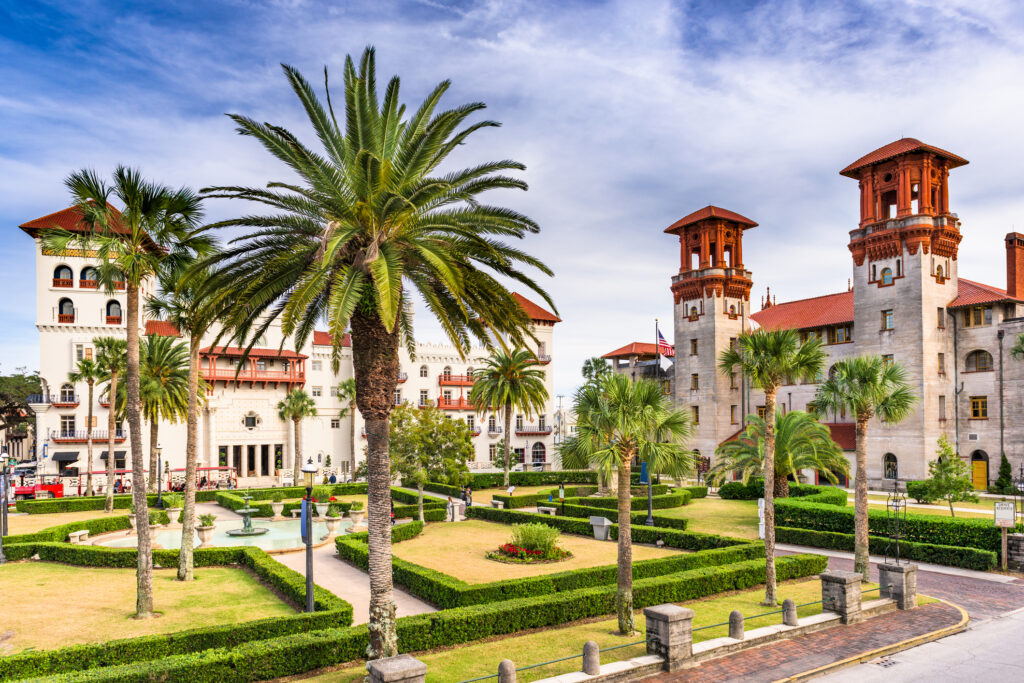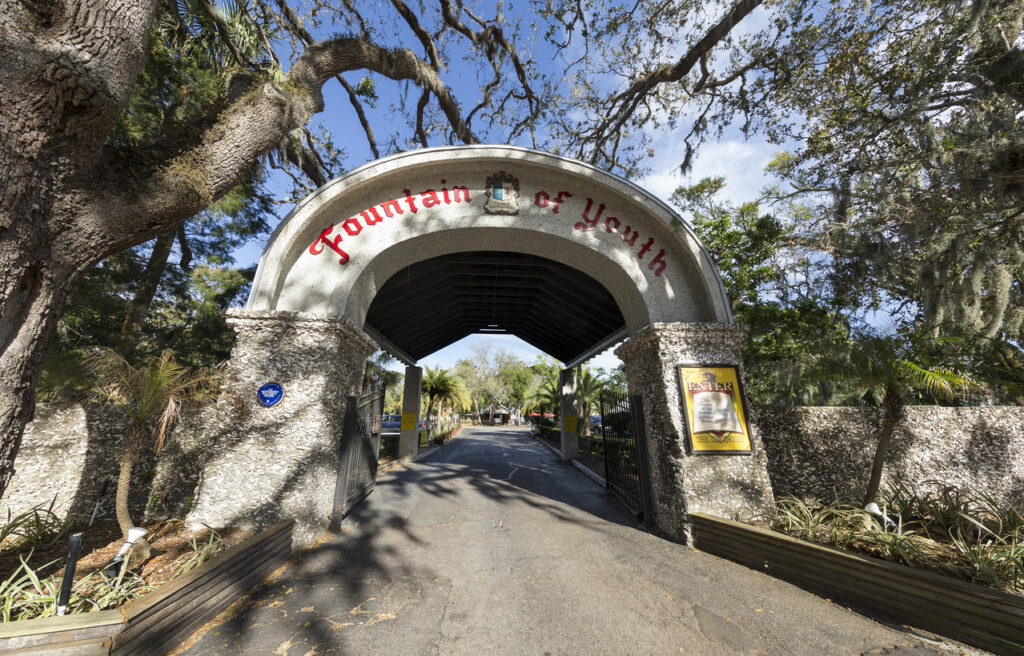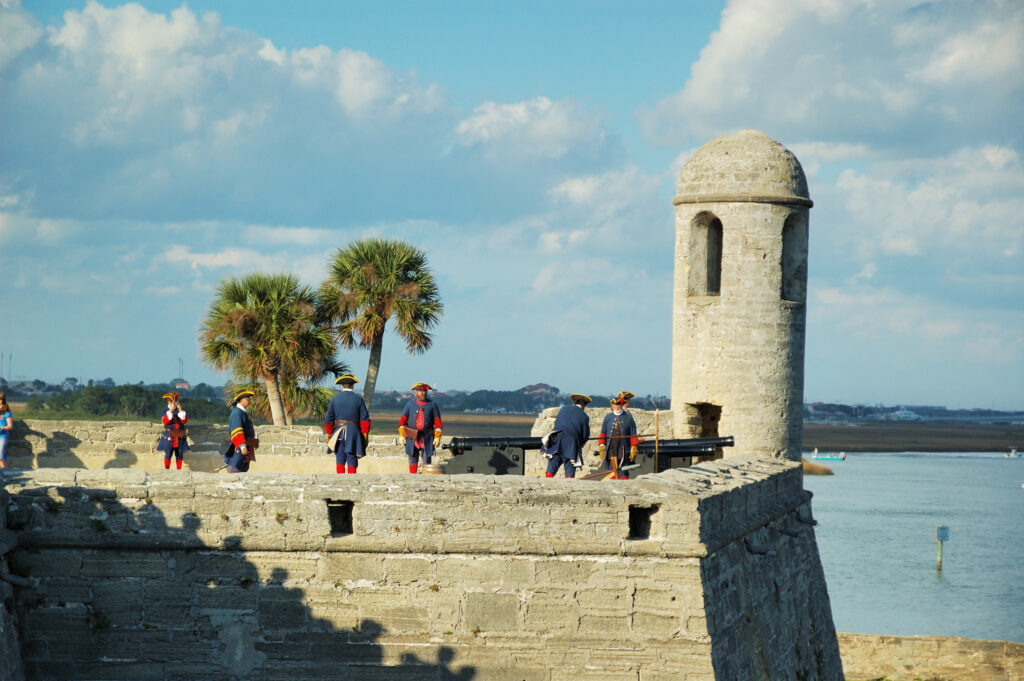Visiting St. Augustine, Florida, is like visiting a vibrant European city. There is nothing like it, or at least very little anyway, here in the United States. It is truly a unique tourist experience. The old-world charm is enhanced by the city’s robust arts scene, culinary destinations, historic attractions and boutique shops.
The City

Established in 1565 by Don Pedro Menendez de Aviles, St. Augustine is the oldest permanent European settlement in the continental United States. Spain claimed Florida in 1513 through an expedition by Ponce de Leon and the area served as a major outpost for Spain’s New World empire for many years. But because of the city’s prominent and strategic location, France and Britain competed for the area and had a significant presence during its first few centuries. In fact, Sir Francis Drake attacked and burned St. Augustine in 1586.
St. Augustine is the nation’s oldest city. Colonial America actually got its start here, more than 50 years before the Pilgrims landed on Plymouth Rock and more than 40 years before the settlement at Jamestown. You can see European influence throughout the city’s architecture.
The Landing

One of your first stops should be the Mission Nombre de Dios, part of the Trail of Florida’s Indian Heritage. Stopping here first will give you an idea of where and how things began for St. Augustine. In the 16th Century, it was here that Father Lopez celebrated Mass at a rustic altar made of wood, which was considered the first parish Mass in what is now the United States. A giant cross marks where the first landing took place.
Here, you can also enjoy beautiful views of Matanzas Bay, St. Augustine’s inlet, and the North River and pause for a moment of reflection or relaxation.
Fountain of Youth

Another must on your list is Ponce de Leon’s Fountain of Youth Archaeological Park. Yes, this is the infamous fountain of youth we’ve all heard of. There indeed is a spring house that encompasses the original spring that was noted in a land grant dating to the 1600s. The water from the spring contains more than 30 minerals and is sourced from the Floridan aquifer which lies under much of the northern part of the state.
In addition to being able to take a sip from Juan Ponce de Leon’s Spring of Eternal Hope, you can also take in a hodgepodge of other unique experiences during your visit. Check out the planetarium, peacocks, cannon firings, blacksmith exhibit, archeological excavations, recreated villages, riverwalk and more.
Castillo de San Marcos National Monument

The main attraction for many who visit St. Augustine is this National Park Service site. The Castillo de San Marcos is the oldest masonry fort and best preserved example of a Spanish colonial fortification in the continental United States. The fort’s beginnings were in 1672, but it wasn’t completed until 1695. The Castillo replaced nine other wooden fortifications on or near this site prior to the one that is there today.
Its structure is stunning and its history is compelling and complicated. The history of the area changing hands among Spain, France, Britain, and the U.S. all centers on the Castillo de San Marcos. The U.S. Army renamed it Fort Marion in 1825, Confederate troops occupied the fort during the Civil War, and the original name was restored in 1942. History isn’t always pretty, but it is important to learn. Here, the federal government used the fort to house native prisoners during the Seminole War of 1835-42, including Native American leader Osceola.
You can see the fort’s prison on your tour, along with a chapel, an 18th Century Spanish treasury room, which the U.S. Army later used as a supply room, and living quarters that would have been used by soldiers stationed there. The fort has beautiful panoramic views of the city and various waterways, some fantastic interpretive panels about some of the diverse inhabitants over the centuries and you can get a glance at some rare prisoner graffiti as well.
Historic District
Within walking distance of the Castillo de San Marcos are blocks and blocks of wonderful restaurants, shops, hotels, historic homes and other places that can round out a wonderful trip. For example, stopping by The Hyppo for gourmet ice pops on a hot Florida day will make anyone’s day!
by Shuan Butcher

